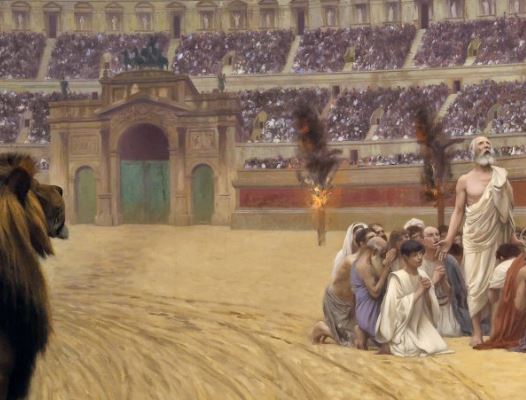
There were many things that added to the decline of gladiator fighting in ancient Rome. Like any major event sponsored by the state it cost money. It was believed the Crisis of the 3rd century help put an end to this barbaric practice. The Crisis of the Third Century was a period when the Roman Empire nearly collapsed due to the threat of civil war, invasion, plague, and economic depression. Many of the magistrates found gladiator fighting a costly and unrewarding form of entertainment as there was so much going on throughout the empire. Yet still, emperors continued to fund these fights in an attempt to keep roman citizens happy and unaware of what was really going on. An additional contribution to the decline of gladiators was Christianity. As many people in the empire were starting to adopt this great monotheistic religion, the tolerance for seeing people brutally killed was becoming less and less entertaining. It was believed by this new religion sweeping throughout the empire, Christianity changed how romans looked at human life. The felt this type of entertainment broke down the spirit and was morally harmful. Furthermore, they considered this type of entertainment as a form of pagan human sacrifice.
It was not until Constantine I when gladiator games would be officially banned. He created a law which forced combats and slaves to pay for their crimes by working in the mines instead of engaging in ruthless fighting till the end. He felt people should be able to pay for their crimes without any blood being spilt. Even though this sounds really upright of Constantine, he broke his own law and could not resist this form of entertainment. Therefore gladiator fights still lingered!
When Theodosius the Great adopted Nicene Christianity as the state church of the Roman Empire, he would ban all pagan practices and festivals. This would further assist in ending this pagan practice of human sacrifice and combat as a form of entertainment. The final blow which ended this ancient Roman practice of entertainment was in 404 AD. According to historical records, Saint Telemachus went to end a fight between two gladiators and was killed by Romans who were displeased with him interrupting the notorious fights. It was believed he was stoned to death by the spectators. However, there are claims that he was brutally killed by Roman guards or stabbed to death by a gladiator. There are even some accounts that say the audience left in silence. Nevertheless, this impressed Emperor Honorius so much, due to the monk’s martyrdom; Emperor Honorius officially put a ban to this practice. After this event, Telemachus was made a saint on January 1, 404 AD which was the last gladiatorial fight in Rome. It was not known where this event accord. Some historians speculate it was at the famous coliseum. The only thing that was recorded was that this event took place at an arena but no name of place is given. Like all historical events, historians must put the pieces of information together to get an idea of what actually happened.
Click on the below topics to explore and learn more about the Ancient Roman gladiators and how influenced Roman culture!

